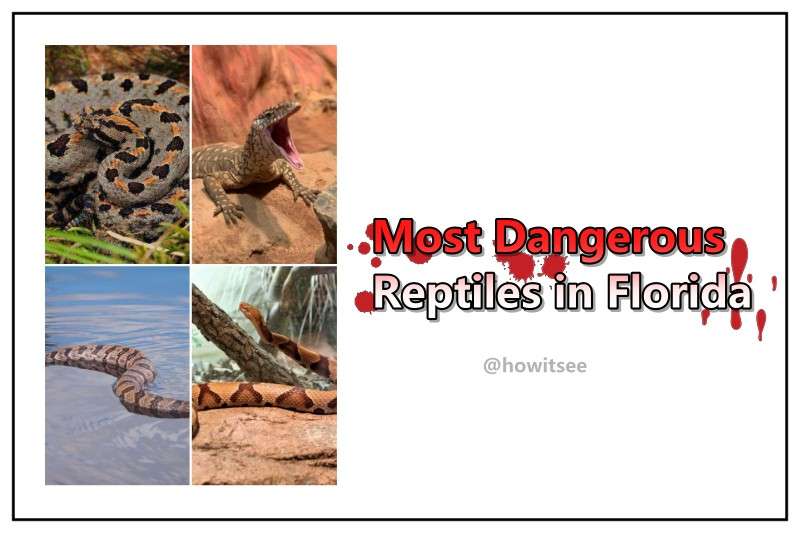Today we have come up with another interesting article on the Top 15 Most Dangerous Reptiles in Florida, their lethality, and what threats they may pose. Reptiles are pretty scary creatures, and many of us are scared at the mere sight of them.
Different types of deadly reptiles, ranging from venomous snakes to deadly turtles, are found in the wilderness of Florida; some are native, while others are introduced. Many species of reptiles have also been invasive in Florida and create chaos every now and then.
Top 15 Most Dangerous Reptiles in Florida
15) Florida Worm Lizard
|
Common Name |
Florida worm lizard, Graveyard snake, and Thunderworm |
|
Scientific Name |
Rhineura floridana |
|
Size |
18–30 cm (7–12 in) |
|
Habitat |
Shrublands and Forests |
|
Danger Level |
Slightly Dangerous |
|
Reason |
Have powerful bites |
The Florida snake lizard, contrary to its name, is neither a snake nor a lizard; they are frequently mistaken for pink-colored earthworms. They are limbless, burrowing lizards that have scales on their ears.
Although they are not venomous, their bites are painful, and they pose some danger to humans. They spend almost all their lives in underground burrows and have the unique feature of moving in both directions from both ends of their bodies.
14) Tokay gecko
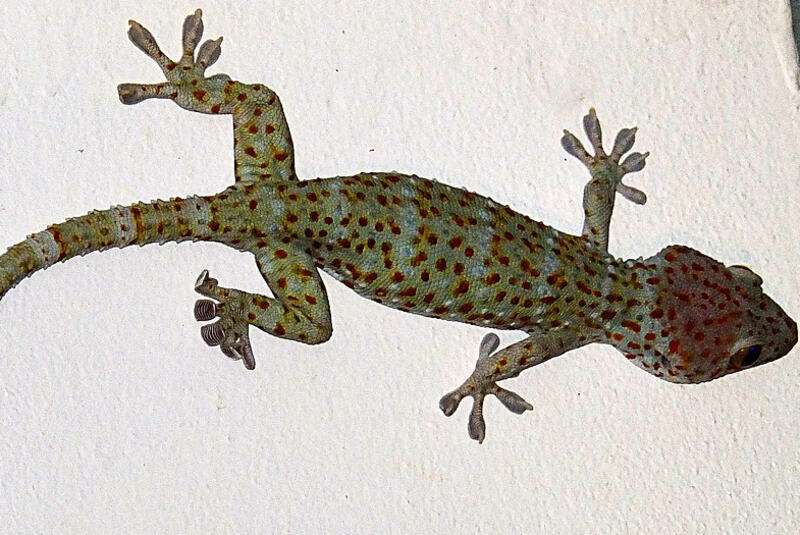
|
Common Name |
Tokay gecko |
|
Scientific Name |
Gekko gecko |
|
Size |
25–30 cm or (10–12 inches) |
|
Habitat |
Found in Everglades ecosystems and in urban areas |
|
Danger Level |
Moderately dangerous |
|
Reason |
Aggressive, Painful Bites |
Tokay geckos are one of the largest living geckos and are very dangerous, naturally aggressive lizards that are never suitable as pets and are released in the wilderness by their owners, who aren’t aware of their behavior prior.
They are also non-venomous but bite very strongly if they grab your finger, which could be very painful and infectious!
13) Nile Monitor
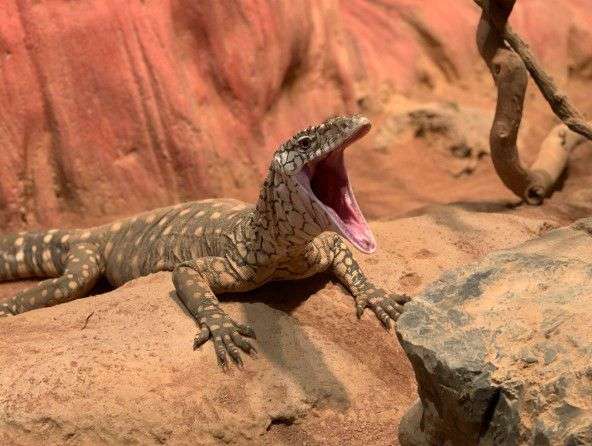
|
Common Name |
Nile monitor |
|
Scientific Name |
Varanus niloticus |
|
Size |
134-170 cm (4.5-5.7 feet) |
|
Habitat |
Dry, desert climate, Lee and Palm Beach Counties in Florida, and canal systems. |
|
Danger Level |
Mildly dangerous |
|
Reason |
Bites aggressively and can tear flesh with ease; they can also hit hard by their tail whipping, and their saliva is quite toxic too. |
Nile monitors are one of the largest lizards in the world, and their sharp teeth, long claws, and powerful bodies make them more deadly than other lizards.
They are rarely aggressive toward humans, but they should not be chased or threatened. They also have toxic saliva, which can give you systemic symptoms, and they can hurt you physically by biting or by their powerful tail whip.
Any Nile Monitor who can get a hold of you will tend to grab, squeeze, grind, crunch, or twist. They might only pinch a piece of skin off your hand, but a bigger one can rip off a digit.
After shredding and biting, they explosively defecate on anything that’s holding it!
12) Eastern Copperhead
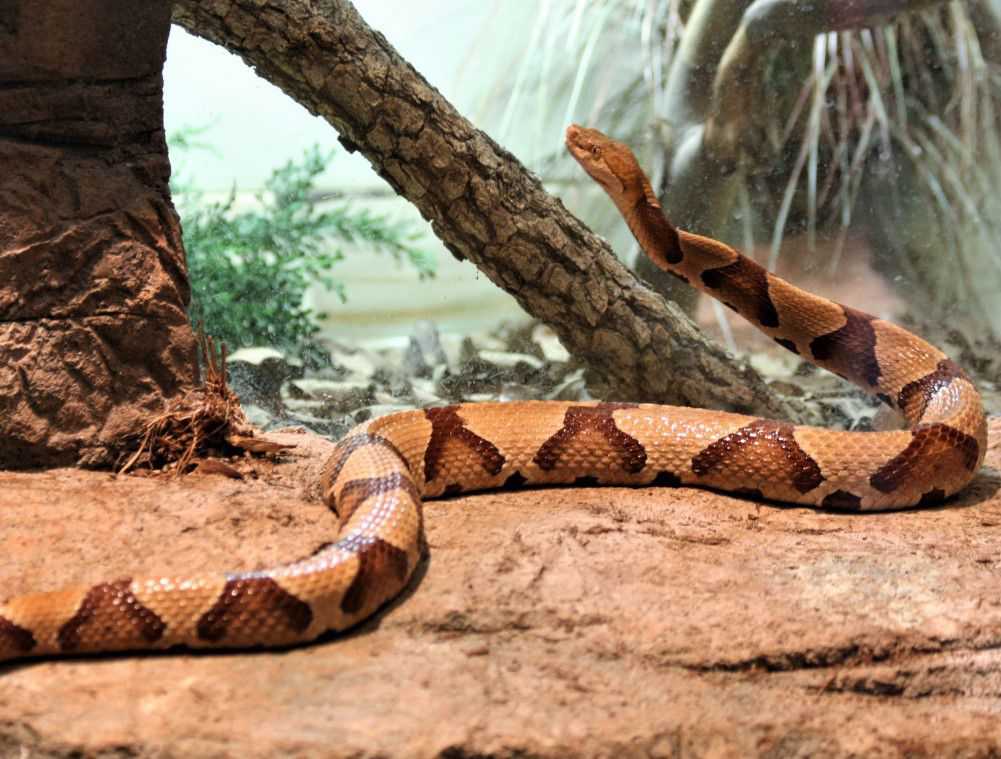
|
Common Name |
Eastern Copperhead |
|
Scientific Name |
Agkistrodon contortrix |
|
Size |
50–95 cm or (20–37 in) |
|
Habitat |
Deciduous forest, mixed woodlands, and low-lying, swampy regions. |
|
Danger Level |
Moderately dangerous |
|
Reason |
Bites are rarely fatal but cause painful and temporary tissue damage, swelling, and necrosis |
Eastern Copperhead snakes have a copper color on their heads; that is why they’re called copperheads, and like all pit vipers, they have triangular-shaped heads.
Their bites are seldom fatal, and systemic symptoms can be cured without anti-venom treatment, but these snakes have a record for most bites in the United States, and around 3,000 people are bitten every year by these snakes.
They are very strange and unique snakes in various ways; the females are known to reproduce asexually, and during an experiment on mice, it was found that their venom has the potential to shrink a cancerous tumor!
11) Spectacled Caiman

|
Common Name |
Spectacled Caiman, Common Caiman, White Caiman |
|
Scientific Name |
Caiman crocodilus |
|
Size |
1.4–2.5 meter or (4.6–8.2 feet) |
|
Habitat |
Forests, shrublands, grasslands, savannas, and Inland freshwater bodies such as wetlands and rivers. |
|
Danger Level |
Moderately dangerous |
|
Reason |
Bites can cause infections and traumas |
Spectacled caimans are very intelligent, semi-aquatic reptiles that are much better adapted to living in water than walking on plain ground. They are not known to attack humans often, but they can still inflict dangerous wounds.
These reptiles are named so because they look like they are wearing spectacles because of the complete nose bridge. They can swim or propel themselves in water just by using their strong tails, not their limbs at all.
10) Dusky Pygmy Rattlesnake

|
Common Name |
Florida ground rattlesnake, Dusky pygmy rattlesnake, hog-nosed rattler, or pygmy rattler |
|
Scientific Name |
Sistrurus miliarius barbouri |
|
Size |
35.5-76.0 cm or (14.0-29.9 in) |
|
Habitat |
Prairies around lakes and ponds, and along freshwater marshes and cypress swamps, lowland pine flatwoods, and in hydric hammocks. |
|
Danger Level |
Moderately dangerous |
|
Reason |
Rarely fatal, bites are painful and can result in loss of digit |
Dusky pygmy rattlesnakes are stout-bodied, venomous snakes with beautifully colored, sub-circular, or oval-shaped spots on their dorsal scales.
Although venomous, their bites are not generally life-threatening but pose a danger to older people or kids.
They have cytotoxic venom, which is devoid of any neurotoxins but can cause hemorrhagic and tissue damage.
These snakes are quite territorial and have a reputation for protecting themselves when agitated or disturbed.
They are diurnal snakes and do not believe in digging burrows on their own; instead, they use burrows that are dug by small rodents or tortoises.
9) Common Snapping Turtle
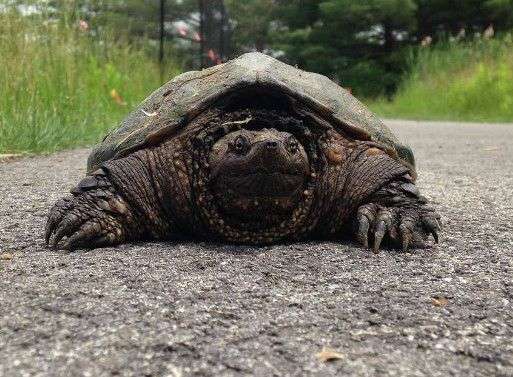
|
Common Name |
Common snapping turtle |
|
Scientific Name |
Chelydra serpentina |
|
Size |
25–47 cm or (9.8–18.5 in) |
|
Habitat |
Shallow streams or ponds occasionally dwell in brackish water estuaries |
|
Danger Level |
Moderately Dangerous |
|
Reason |
Really hard, painful bites that can cut through bones |
The common snapping turtle has the serpentine epithet in its name because of its snake-like behavior.
They are one of the most dangerous reptiles in Florida because they have very powerful bites, and bites can cause severe wounds or even amputation of digits. A wound infection can also occur if left untreated.
They have an amazing lifespan of up to 150 years and are capable of eating anything.
These turtles developed their snapping behavior as a result of their inability to completely hide inside their shells, which makes them more vulnerable to attacks. The common snapping turtle is the state reptile of New York.
8) Alligator snapping turtle
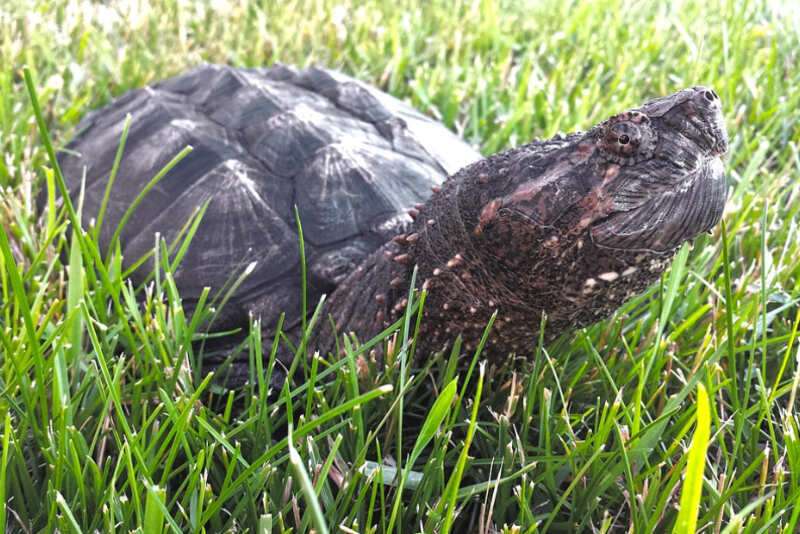
|
Common Name |
Alligator snapping turtle |
|
Scientific Name |
Macrochelys temminckii |
|
Size |
35-80.8 cm or (13.8-31.8 in) |
|
Habitat |
Primarily in the Gulf of Mexico’s waters, lakes, rivers, backwater swamps, and occasionally in brackish water systems |
|
Danger Level |
Moderately dangerous |
|
Reason |
They have a bite force of 1,000 pounds and can bite through bones, tearing them apart. |
Alligator snapping turtles are one of the largest freshwater reptiles in Florida and have a distinctive dark carapace and ridged shell that resemble alligators’ skin.
They have big heads, sharp claws, powerful jaws, and very thick shells, which bear three ridges and have large, spiky scales.
These turtles are very dangerous and are even known to kill and eat American alligators.
They are even known to survive months without breathing, and their metabolism reduces to a great extent during winter.
7) American Crocodile
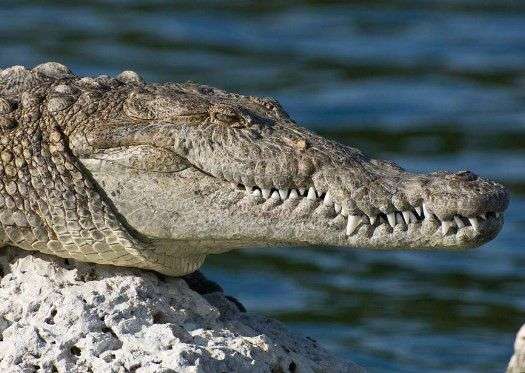
|
Common Name |
American crocodile |
|
Scientific Name |
Crocodylus acutus |
|
Size |
2.9-4.1 meters (9.6-13.5 feet) |
|
Habitat |
Caribbean Islands and Coastal Pacific islands, mangrove swamps, fresh waters, saltwater lakes, and river mouths. |
|
Danger Level |
Highly Dangerous |
|
Reason |
Attacks quite frequently, and death is certain |
American crocodiles are one of the most widespread species of crocodiles found in Florida. Unlike other crocodiles, they are not green; their rough, scaly body is olive-grey in color.
They are dangerously large predators that can attack and kill humans. They have strong jaws and sharp spiny teeth that can easily tear flesh from bones. Once caught in their jaws, it is extremely difficult to escape.
They are found in a broad range of habitats and are usually found basking in the sun with their mouths wide open. They also use roaring noises as a way to communicate with each other.
6) American Alligator

|
Common Name |
Common Alligator, American Alligator |
|
Scientific Name |
Alligator mississippiensis |
|
Size |
3.4-4.6 m (11.2-15.1 ft) |
|
Habitat |
Marshes, swamps, rivers, and lakes of Florida |
|
Danger Level |
Highly Dangerous |
|
Reason |
Rarely fatal but bites are very powerful and can cause serious injuries and severe infections |
American alligators are not as dangerous as American crocodiles, and some people are also seen sharing a swim with these creatures.
The annual fatality rate of these reptiles in Florida is 0.3, which means only one person dies every three years from the bites of these alligators, but they have a very powerful bite force of 2125 psi, and their bite will result in a lot of blood loss and tissue damage; severe infection can also happen.
They are more adaptable to colder temperatures than crocodiles and can grow up to 3,000 teeth in their lifetime!
5) Burmese Python

|
Common Name |
Burmese python |
|
Scientific Name |
Python bivittatus |
|
Size |
5 meters or (16 feet) |
|
Habitat |
Grasslands, Swamps, Marshes, Woodlands, Rocky foothills, Everglade ecosystem in South Florida |
|
Danger Level |
Highly dangerous |
|
Reason |
Although not venomous, they can kill prey by constriction, squeezing until the prey suffocates to death |
Burmese Pythons are next on this list of dangerous reptiles in Florida, they are non-venomous pythons, but that doesn’t mean they’re not dangerous.
Burmese pythons are known to bite people in self-defense, and their bites are known to cause several lacerations.
These pythons have the ability to constrict and suffocate their prey to death, but no human has ever been killed by a Burmese Python in Florida.
Burmese pythons are one of the largest non-venomous snakes in the world.
They are very secretive snakes and avoid any kind of interaction with humans; they never strike or attack people unless provoked.
They inhabit near water sources and have excellent swimming capabilities!
4) Common Coral Snake
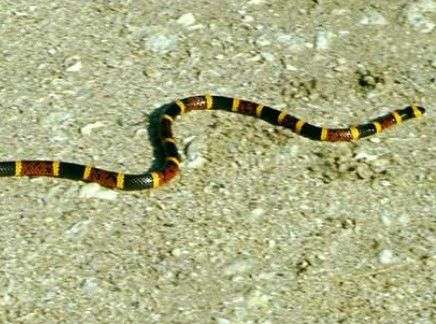
|
Common Name |
Common coral snake, Eastern coral snake, and American Cobra |
|
Scientific Name |
Micrurus fulvius |
|
Size |
80 cm (31 in) |
|
Habitat |
Mesophytes, South Florida rocklands, Dry bushy areas, Scrub oak forests, Pitch Pine coasts, and Coastal plains of the southeast |
|
Danger Level |
Highly dangerous |
|
Reason |
Venom is neurotoxic and may cause paralysis, respiratory failure, and possibly death |
The common coral snake, or American cobra, as we may say, is one of the most venomous snakes, but because of their weak and smaller fangs, their venom delivery system is very fragile, and the amount of venom injected is low too.
These snakes do not attack their prey and prefer to remain hidden, buried in leaf litter while waiting for it. They have an expansive range of coloration and patterns on their scales.
Some specimens are known to be aquatic, and these are the only
species of North American snakes that lay eggs.
3) Florida Cottonmouth
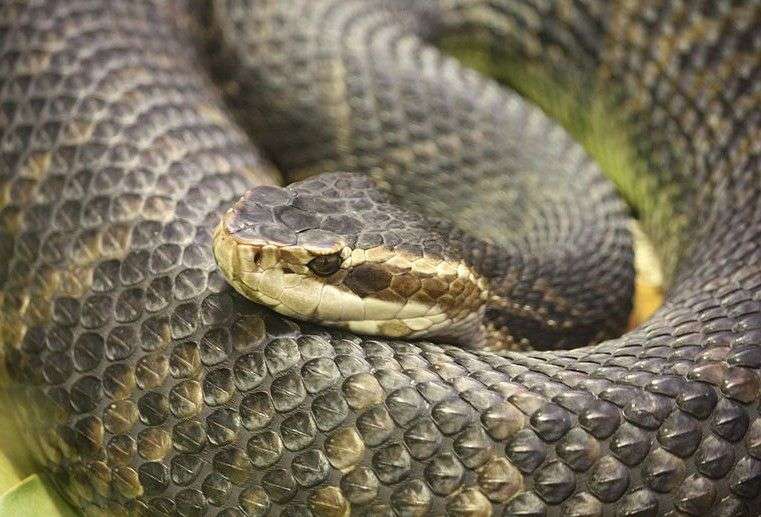
|
Common Name |
Florida Cottonmouth |
|
Scientific Name |
Agkistrodon conanti |
|
Size |
189.2 cm or (74.5 inches) |
|
Habitat |
Aquatic environments, swampy areas, wetlands, cypress flats and wet prairies, mix pine woods, and thickets |
|
Danger Level |
Highly dangerous |
|
Reason |
Venomous Bites can kill humans and pets |
Florida cottonmouth snakes are the only sea snake or water snake species found in North America.
They are great swimmers and can even bite underwater. Their bites are very dangerous. Their scientific name translates to “hook-tooth fish-eater,” and their common name comes from the white color of the insides of their mouth.
Cottonmouth’s venom also contains toxic hemotoxins, which are highly hemorrhagic and break down blood cells.
They also have glands that secrete foul-smelling perfumes to warn off their predators.
2) Eastern Diamondback Rattlesnake
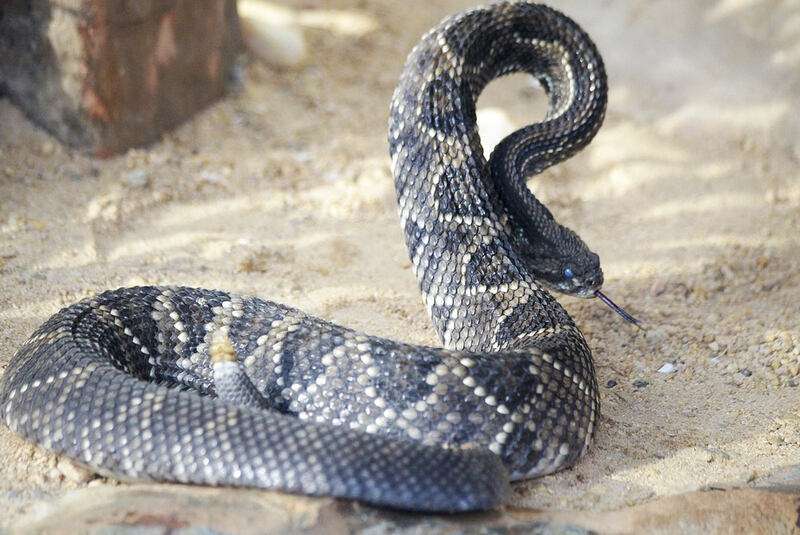
|
Common Name |
Eastern Diamondback Rattlesnake |
|
Scientific Name |
Crotalus adamanteus |
|
Size |
2.4 m (7.8 ft) |
|
Habitat |
Scrub lands, Dry pine forest, wiregrass flatwoods, sandhills, coastal areas, marshes, swamp forest, sandy mixed woodlands, and wet prairies. |
|
Danger Level |
Highly Dangerous |
|
Reason |
Venomous bites can be fatal to humans |
Eastern diamondback rattlesnakes are pit viper snakes and are one of the heaviest venomous snakes found in Florida.
They are named because they have 25–35 diamond-shaped blotches on their dorsal scales.
These are the most dangerous snakes in Northern America and have a mortality rate of 30 percent; these snakes have the longest fangs in comparison to any other rattlesnake species.
Their venom contains hemotoxins, which can clot fibrinogen, which kills red blood cells and damages tissues.
Eastern diamondback rattlesnakes’ rattles are quite well developed and can be heard from a large distance of 20–30 feet.
1) Canebrake Rattlesnake
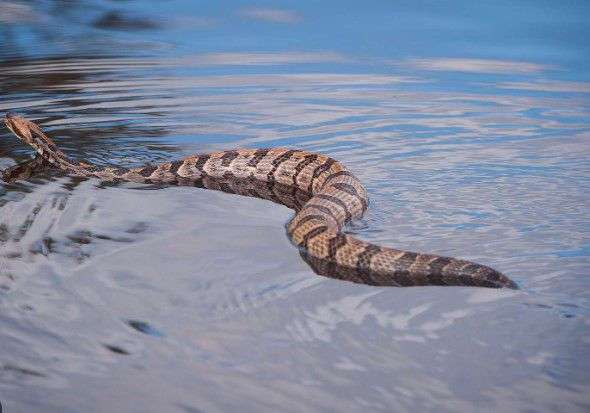
|
Common Name |
Canebrake Rattlesnake, Banded Rattlesnake, or Timber Rattlesnake |
|
Scientific Name |
Crotalus horridus |
|
Size |
91–152 cm or (36–60 in) |
|
Habitat |
Deciduous forests, dense woodlands, mixed hardwood and coniferous forests, swamps and river floodplains, lowland cane thickets, and forest canopies |
|
Danger Level |
Highly Dangerous |
|
Reason |
Their venom is potent enough to kill humans |
Timber rattlesnakes are solitary creatures and are the third largest snakes in the United States. They have comparatively wide heads and are heavy-bodied snakes.
They attack rarely, but attacks could be fatal, and minor symptoms such as local pain, stomach cramping, diarrhea, muscular spasms, swelling, nausea, and vomiting can occur.
They are excellent climbers and can reach heights of 80 meters or more on trees.
Conclusion:
Florida has the most number of introduced species of amphibians and reptiles than any other place in the world.
Some reptiles had an aggressive invasion in Florida, and since then, they have been harming endemic species by direct predation, limited resource competition, spreading various diseases, and disturbing natural ecosystems.
Because of their extensive invasion, the populations of reptiles are notably becoming out of balance!
Reference: Florida Amphibians & Reptiles
Also Read:

Hey there! I’ve been the kid who used to love watching all the science stuff and that fascination lead me to choose Zoology as my Major in Graduation. I’m a self-taught writer and spend my time writing scintillating content on animals. I love observing animals behavior and their bond with humans. I want to give my point of view regarding animals i research about. I had done several projects on animals during my graduation and learned their behavior thoroughly.
